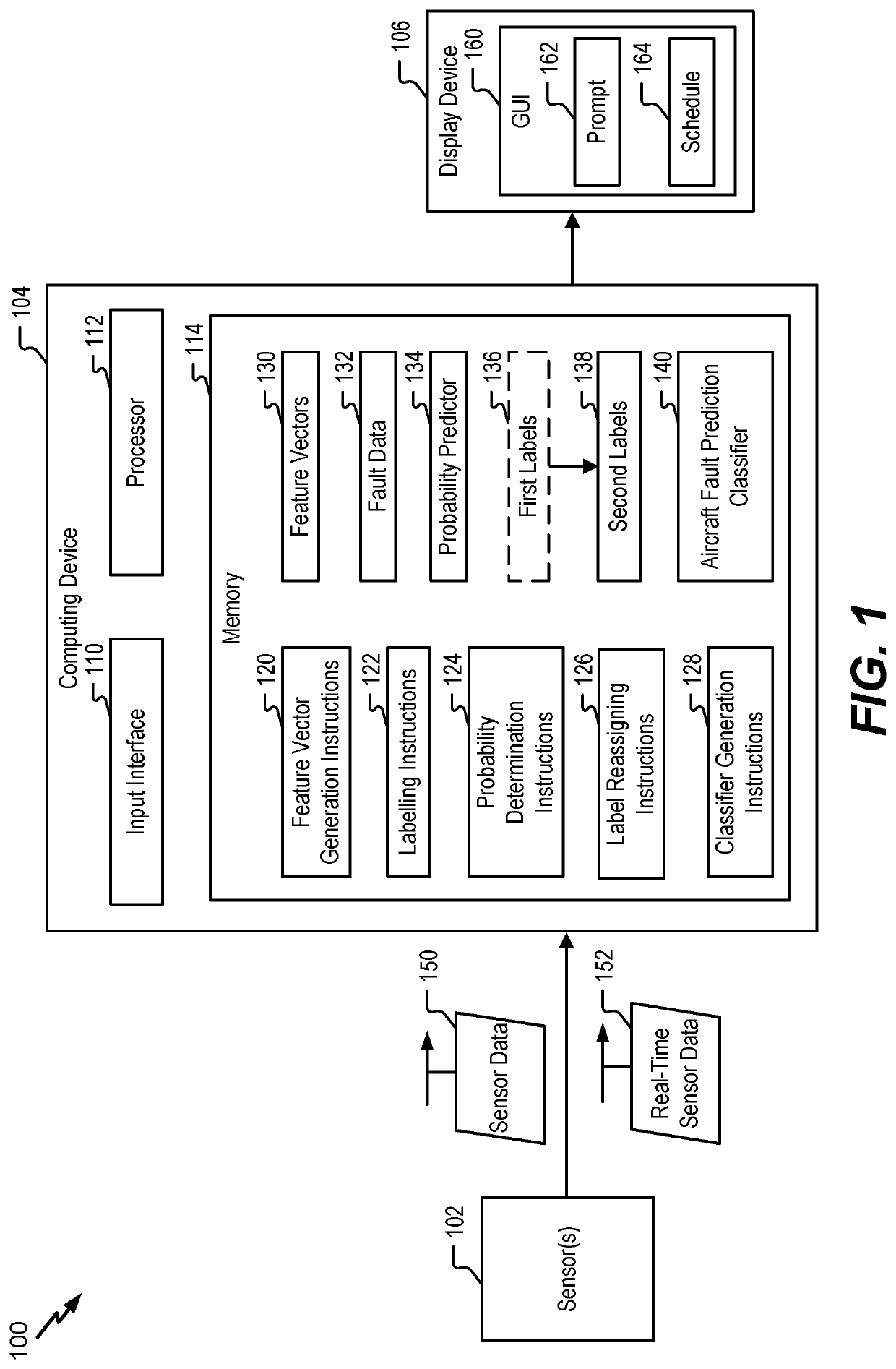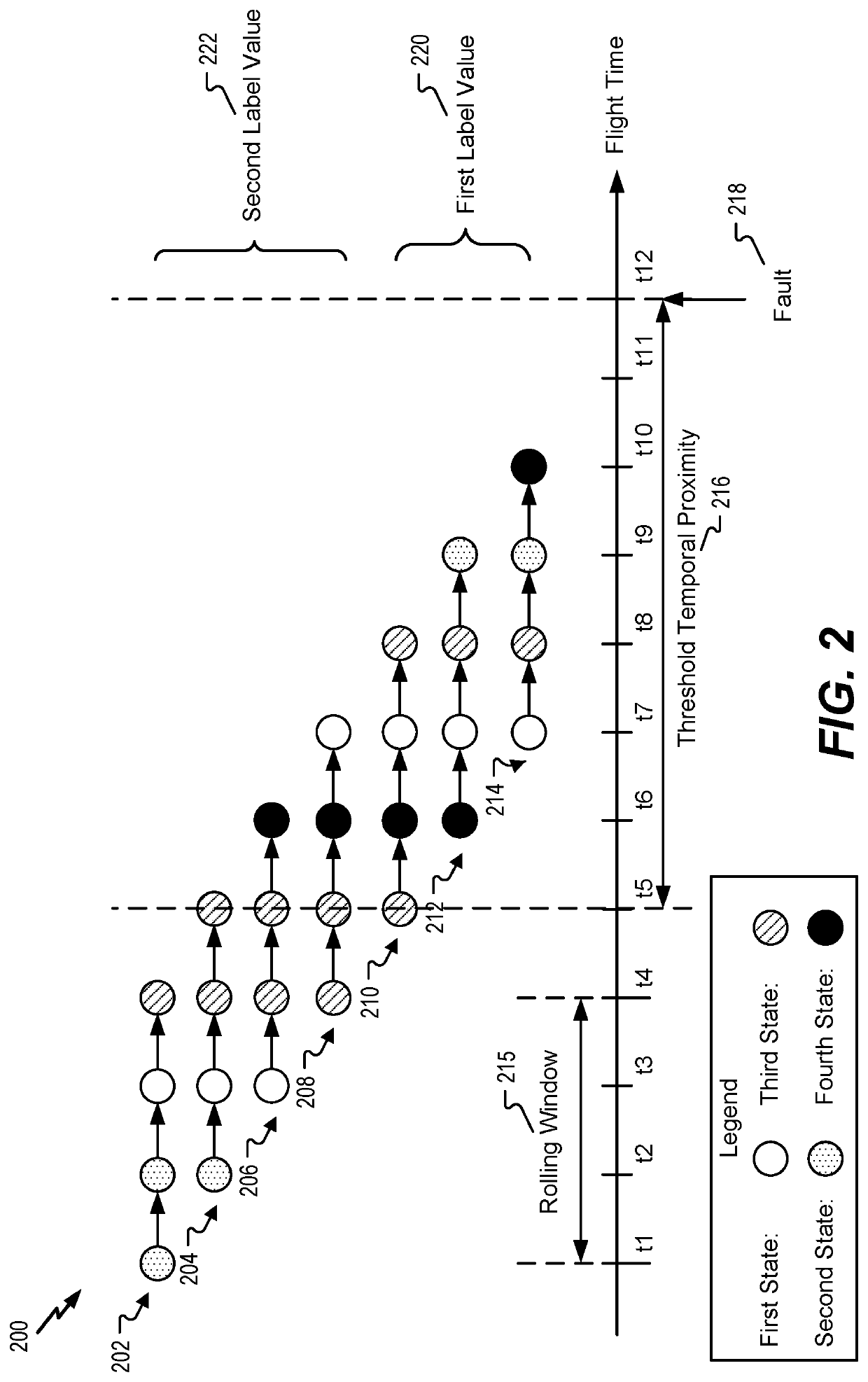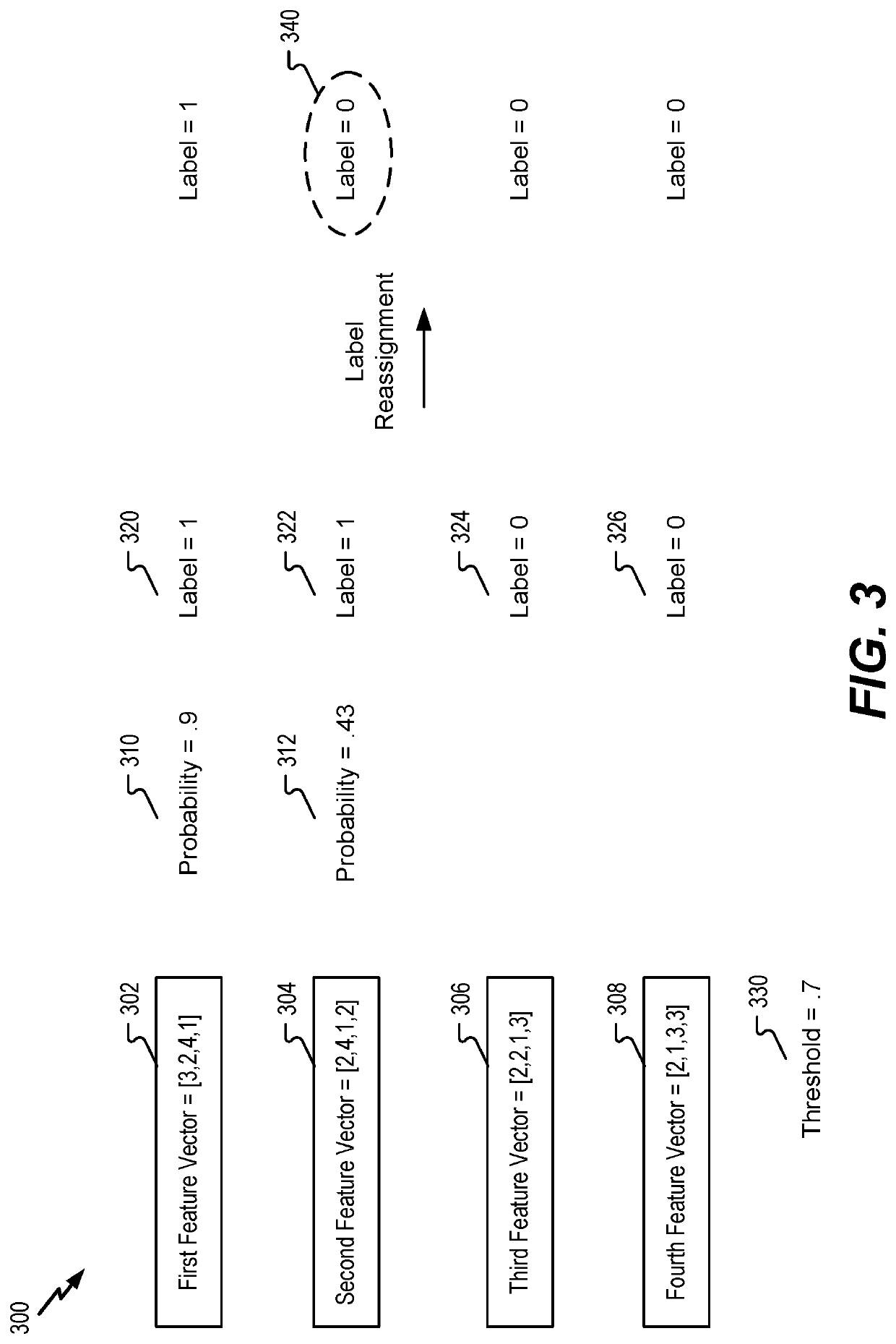System and method for generating an aircraft fault prediction classifier
a technology of aircraft fault and classifier, applied in probabilistic networks, testing/monitoring control systems, instruments, etc., can solve problems such as false positive labels for some feature vector labels, model may no longer represent the operating state of the vehicle, and the development of physics-based models can take a long tim
- Summary
- Abstract
- Description
- Claims
- Application Information
AI Technical Summary
Benefits of technology
Problems solved by technology
Method used
Image
Examples
Embodiment Construction
[0014]Particular implementations are described with reference to the drawings. In the description, common features are designated by common reference numbers throughout the drawings. As used herein, various terminology is used for the purpose of describing particular implementations only and is not intended to be limiting. For example, the singular forms “a,”“an,” and “the” are intended to include the plural forms as well, unless the context clearly indicates otherwise. Further, the terms “comprise,”“comprises,” and “comprising” may be used interchangeably with “include,”“includes,” or “including.” Additionally, it will be understood that the term “wherein” may be used interchangeably with “where.” As used herein, “exemplary” may indicate an example, an implementation, and / or an aspect, and should not be construed as limiting or as indicating a preference or a preferred implementation. As used herein, an ordinal term (e.g., “first,”“second,”“third,” etc.) used to modify an element, ...
PUM
 Login to View More
Login to View More Abstract
Description
Claims
Application Information
 Login to View More
Login to View More - R&D
- Intellectual Property
- Life Sciences
- Materials
- Tech Scout
- Unparalleled Data Quality
- Higher Quality Content
- 60% Fewer Hallucinations
Browse by: Latest US Patents, China's latest patents, Technical Efficacy Thesaurus, Application Domain, Technology Topic, Popular Technical Reports.
© 2025 PatSnap. All rights reserved.Legal|Privacy policy|Modern Slavery Act Transparency Statement|Sitemap|About US| Contact US: help@patsnap.com



